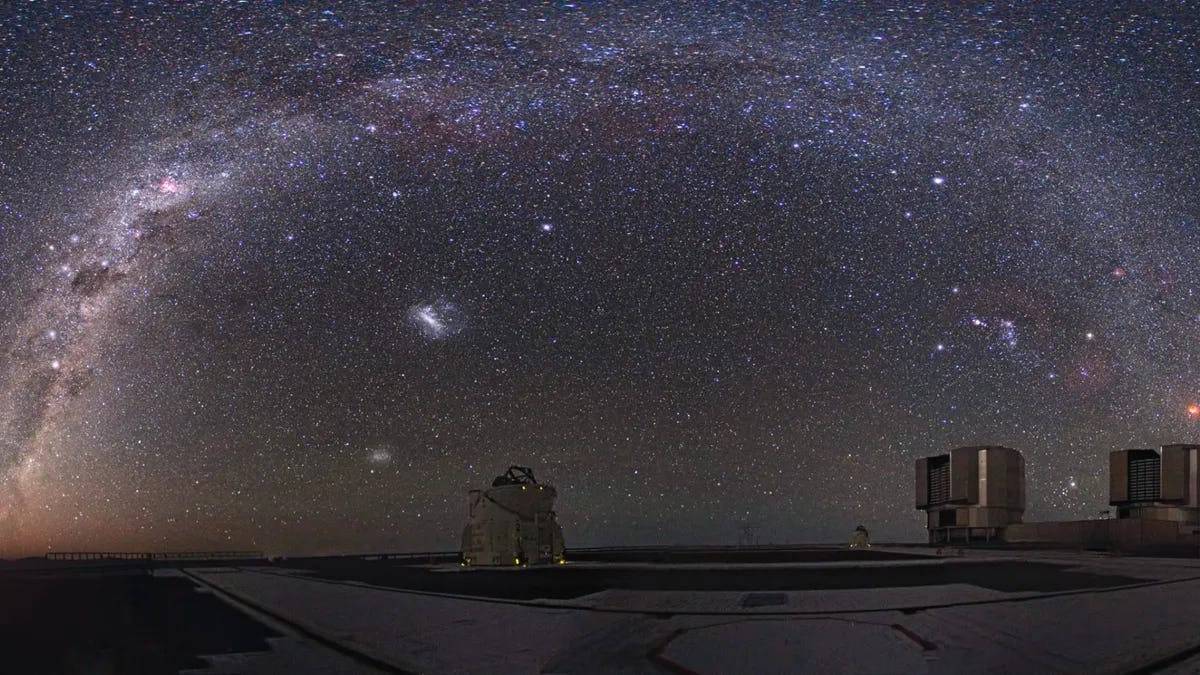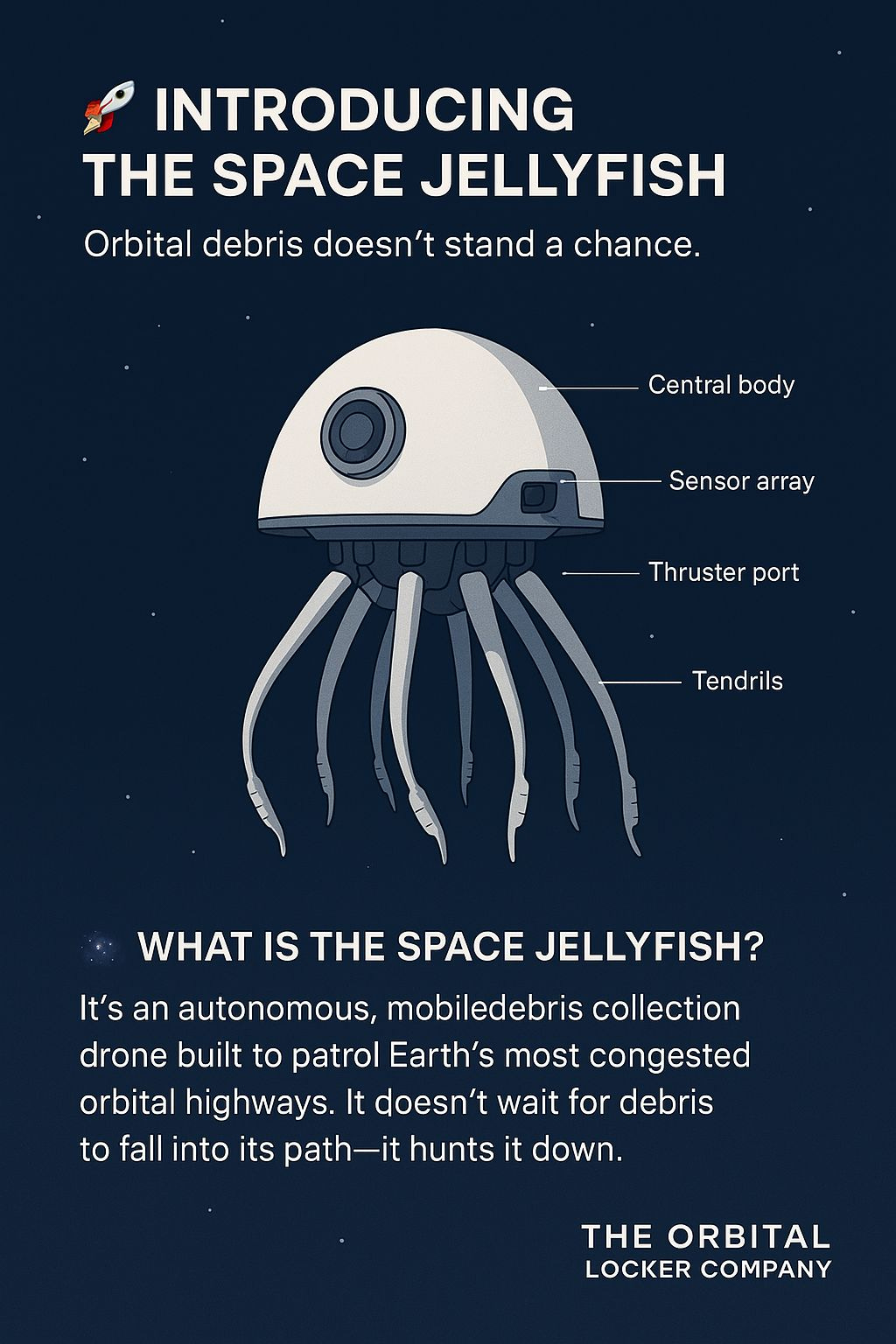Get ready: the EU is about to throw down the regulatory gauntlet in space. The upcoming EU Space Act, expected in the next few months, could mark a turning point in how we manage orbital traffic and tackle space debris. This isn’t just another round of recommendations! Think GDPR, but for orbit. It could mean the beginning of legally binding rules that could reshape the way the whole industry works. And yes, it’ll apply to anyone operating in the EU market, including the big U.S. players.
The EU Space Act is designed to do two things at once: prevent orbital chaos, especially as megaconstellations multiply, and ensure regulation doesn’t choke out innovation. If Brussels gets this right, the EU could redefine what responsible space operations look like worldwide.
Also in this issue: Airbus locks in the first commercial order for Astroscale’s docking plates, making satellite removal part of the default build. Astronomers sound the alarm as Chile’s pristine night skies face pollution from a new “green” energy plant. The U.S. Space Force readies orbital refueling tests that could change satellite lifespans forever. Germany’s OKAPI:Orbits gets tapped to bring sharper accountability to the Space Sustainability Rating. And from Scotland’s rising space ambitions to the AI-powered “Space Jellyfish,” we’re seeing more players step up, scale smart, and get serious (and sometimes very ingenious!) about keeping space open for the long haul.
Let’s dive in.
In This Issue
Preparing for the EU Space Act and its potential influence on the future of space traffic management
Airbus Buys First Batch of Astroscale Satellite Removal Docking Plates
Dark skies above world's best astronomy sites could be ruined by new energy project
Space Force to test satellite refueling technologies in orbit
Space Sustainability Rating Awards OKAPI:Orbits Contract to Promote Responsible Behavior in Space
Preparing for the EU Space Act and its potential influence on the future of space traffic management
Europe is preparing to shake up the global space policy landscape with the upcoming EU Space Act, expected to debut in the second quarter of 2025. As Michael P. Gleason outlines in The Space Review, this legislation marks a pivotal shift from voluntary guidelines to binding, enforceable rules for space traffic management and orbital debris mitigation. The goal? To create a unified legal framework across EU member states, strengthen Europe’s strategic autonomy in space, and ensure that the increasingly congested orbital environment remains safe, secure, and sustainable.
The EU Space Act will apply not only to European operators but to any company offering satellite services within the EU market, including major U.S. players. That means international satellite providers will need to align with Europe’s standards or risk losing access to one of the world’s most important markets. It’s a bold play that could raise the bar globally for how we manage space. The legislation is designed to address the growing risks of orbital congestion, especially in the face of megaconstellations and an explosion of commercial activity in LEO.
Crucially, EU officials are making it clear that regulation won’t come at the cost of innovation. As European Commissioner for Defense and Space Andrius Kubilius put it, “smart regulation and competitiveness go hand in hand.” The EU Space Act is being crafted to provide legal clarity without driving companies out of Europe’s space ecosystem. The timing couldn’t be more urgent, stakeholders across the space sector have been calling for more consistent rules as the risk of collisions and debris spirals upward. If the EU pulls this off, it won’t just lead by example; it could reset the global conversation around how we govern and sustain our orbits for the long haul.
Airbus Buys First Batch of Astroscale Satellite Removal Docking Plates
In a major boost for debris mitigation, Airbus just placed the first commercial order for Astroscale’s Gen 2 docking plates (100 of them, to be exact). These plates make it easier to grab defunct satellites for safe removal, using either magnetic capture or robotic arms. They’re also fitted with smart markers that help removal spacecraft track and approach aging satellites with precision.
Airbus plans to integrate the plates into an upcoming LEO satellite constellation, signaling a clear shift where end-of-life planning is no longer optional, but an integral part of the build. As Astroscale UK’s Nick Shave put it, this move shows the industry is finally getting serious about designing for sustainability. One small plate for a satellite, one giant leap for cleaning up low Earth orbit!
Dark skies above world's best astronomy sites could be ruined by new energy project

The Atacama Desert is home to some of the darkest skies on Earth, and some of the world’s most powerful telescopes. But that could change fast. A proposed green hydrogen facility by AES Energy, just 11 kilometers from ESO’s Very Large Telescope (VLT) on Mount Paranal, is drawing serious concern from astronomers. According to ESO’s own study, the plant could brighten the night sky above the observatory by up to 35%, a devastating blow to precision observations of exoplanets, deep-space galaxies, and near-Earth objects.
The stakes aren’t just local. The Cherenkov Telescope Array, under construction nearby, could face an even worse light pollution hit, up to 50%. While the energy project is billed as sustainable, astronomers argue that preserving dark skies is critical for science, global discovery, and our long-term understanding of the universe.
Space Force to test satellite refueling technologies in orbit
The U.S. Space Force is making a major push into orbital logistics with two upcoming missions (Tetra-5 and Tetra-6) aimed at testing satellite refueling in space. Set to launch in 2026 and 2027, these demos will explore whether spacecraft can dock, transfer fuel, and keep going, meaning no costly replacement missions needed.
Tetra-5 will feature Orbit Fab’s RAFTI interface and include docking attempts with a fuel depot and Astroscale’s propellant shuttle. Tetra-6 picks up where that leaves off, trialing Northrop Grumman’s Passive Refueling Module and tanker tech. If successful, these missions could be a game-changer by extending satellite lifespans, cutting costs, and putting in-orbit servicing on the fast track to becoming standard operating procedure.
Space Sustainability Rating Awards OKAPI:Orbits Contract to Promote Responsible Behavior in Space
Germany-based OKAPI:Orbits is stepping up its role in orbital sustainability by partnering with the Space Sustainability Rating (SSR). The mission? Help satellite operators better measure and improve their impact on the orbital environment. Under the new contract, OKAPI will calculate SSR scores for customers using its advanced risk assessment tools, giving space operators a clearer view of how their missions stack up when it comes to responsible behavior in space.
But this isn’t just about better metrics. The collaboration also includes joint development to evolve the SSR framework as space traffic grows more complex. The goal is to push the industry toward smarter practices, reduce collision risks, and make sure space stays open for business in the long run.
Interesting Posts & Videos
With the global space economy projected to hit $1.8 trillion by 2035, Dr. Nic Ross points to Scotland’s growing role as a hub for “near-Earth infrastructure.” From satellite manufacturing and defense to AI, fintech, and international space law, Scotland’s cross-sector strengths make it uniquely positioned to lead. The Niparo Summit, hosted annually at Scottish universities, bring together global leaders to drive real progress on orbital stewardship. The 2025 edition, happening May 21–22 at Heriot-Watt University, will focus on “In-Orbit Insurance and Innovation”.
In a passionate LinkedIn post, Jaime P Oliveira calls out the space industry for dodging the real issue, literally. While space conferences continue month after month, one topic keeps getting sidelined: the growing threat of orbital junk. With every passing year, satellites, the ISS, and even airplanes face mounting risks. And yet, real action still feels far off. Oliveira applauds ESA’s Strategy 2040, but questions why meaningful change is set a decade and a half down the road. He draws a sharp parallel to microplastics, recognized too late, and now nearly impossible to remove from our environment. We can’t afford to wait until it’s unfixable.
After three years leading Sustainable Space Economy (SSE), Timo Mustonen makes it clear: space sustainability isn’t progressing fast enough, and the space industry is still treating it like a checkbox. A global Viasat survey found 97% of people see space as a threat, and yet most companies still view the space economy as something that starts in orbit, instead of something that should be sustainable from the ground up. Mustonen’s point? We don’t need more ESG panels, we need action. Embedding sustainability into every part of the business model, from hiring to supply chain to product design, is how the space sector stays competitive and credible. If we wait until orbit becomes the next battlefield or debris zone, we’ve already lost.
Cameron Margetts of The Orbital Locker Company just unveiled a bold new vision for space cleanup: the Space Jellyfish, an autonomous drone designed to patrol and clean Earth’s orbital highways. Unlike harpoons, nets, or robotic arms, this drone takes inspiration from the natural world, it uses flexible arms and smart navigation to chase down and grab debris, even if it’s spinning or moving unpredictably. Nice!
Conferences & Webinars
Next Steps in Sustainable Space: In-orbit Insurance and Innovation - May 21-22 - Heriot-Watt University Edinburgh Campus
The 7th Summit for Space Sustainability - October 22-23, 2025
Centre de Conférences Pierre Mendès France, Paris
Thanks for reading.
Until next time!





